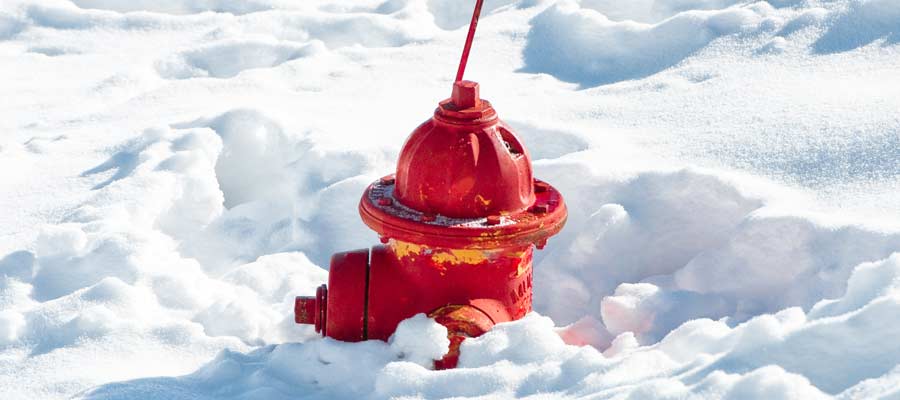*updated 08/21/2020
To keep your municipality running effectively, you need fire hydrants. Used by firefighters during a fire to put out the flames, fire hydrants operate by allowing your local firefighters to quickly tap into your water utility's pressurized water system. The firefighters remove a nozzle or two, fasten hoses to the nozzles and turn the valve to get the water flowing. They know how much pressure they have available based on the hydrant's body color and nozzle type, allowing them to quickly make a decision to help them prevent tragedy and reduce property damage.
When it comes to keeping on top of system maintenance, hydrant flow testing is an important part of your routine. As an indicator of everyday operations as well as meeting emergency firefighting needs, staying on top of your hydrant flow testing is vital to ensure your customers have the water they need when it's needed most. Here's a quick look at the testing process as well as how to stay on top of the maintenance when you have more pressing matters on your to-do list.
With winter having set in, fire hydrant freezing is a serious problem for any water utility. But when it's your hydrants that are frozen, it changes from being an inconvenience for your customers to a potentially life-threatening situation if a fire breaks out. However, when you need to thaw those hydrants, you need to use the right techniques to ensure it's being done safely and in a fashion that will not damage your hydrant. Here's how to make it happen:
Blowing snow, snow banks, limited daylight - all these winter issues makes it harder for people to see your hydrants. Whether it's emergency responders, city maintenance or the general public, hydrants are often in the path of damage when roads are slippery or deep with snow. This means your crews will need to be out in the cold making repairs at a time when the temperatures and conditions can lead to crew accidents. Since you can't avoid the winter, how do you avoid the related problems that occur?
Does your water utility react to hydrant issues or are you proactive in creating a hydrant inspection and maintenance program? If you don't have a system in place already, you're not alone. Unfortunately, water utilities who fall behind in inspecting and maintaining hydrants often find out about the problem when a fire breaks out, costing homes and sometimes lives. Instead of having to play catch-up to poorly maintained hydrants, here's a quick look at how to inspect and maintain your water utility's hydrants.
We've all seen it happen. A poorly set up hydrant installation goes badly and damages the hydrant, the worker or both. How do you safely handle a heavy hydrant on damp ground with improvised equipment? The simple answer is that you don't. Safety needs to come first, not last. Here are some tips on how to safely handle hydrants during installation or removal to best ensure the condition of the hydrant and the safety of the crew:
When winter's chill is gone, it's time to take it easy, freed from the issues winter brings to any waterworks system. But before you start to relax, have you considered what maintenance needs to be performed on your hydrants this spring? Here's our look at what maintenance tasks need to be undertaken before your hydrants are ready for the hot summer time.
Fire hydrants have a dangerous life. They sit on the curb, just waiting for the next car or truck to come spinning out of the intersection and cause significant damage to the barrel. They have burly firemen cranking down on the valves to make them stop flowing without checking if there's debris caught inside, damaging the valves. It's a hard knock life for fire hydrants. What can you do to ensure fast restoration of service to a hydrant after it's been damaged? Let's take a look at some common types of damage commonly seen in fire hydrants and how to fix them:
With the unusual weather of the past few years, it's becoming harder and harder to plan for what the north wind will blow our way. Though forecasting the weather is still a somewhat inaccurate science, climatologists are developing better models to predict weather patterns. unfortunately, they're predicting significant snowfall in the northeast again this winter. But what does that mean to your city, your citizens, your hydrants and your fire department's ability to respond to a fire? Let's take a look at this scenario and see what plans should be put into action proactively so you have what you need when it's needed most.
With winter right around the corner, the practices used during the warmer times of the year need to be put to rest. Specifically, leaving your hydrant's barrel full after using it. For many fluids, including water, when that liquid freezes, it needs to pass from a fluid state to a strong crystallized formation as a solid. As this process takes place, the liquid expands, putting extreme pressures on the sides of the container it's in, often cracking or shattering them. How do you take care of your hydrants during the winter to ensure they'll continue working when you need them? Let's take a good look at the concepts behind ice formation and how to protect your investment.




















